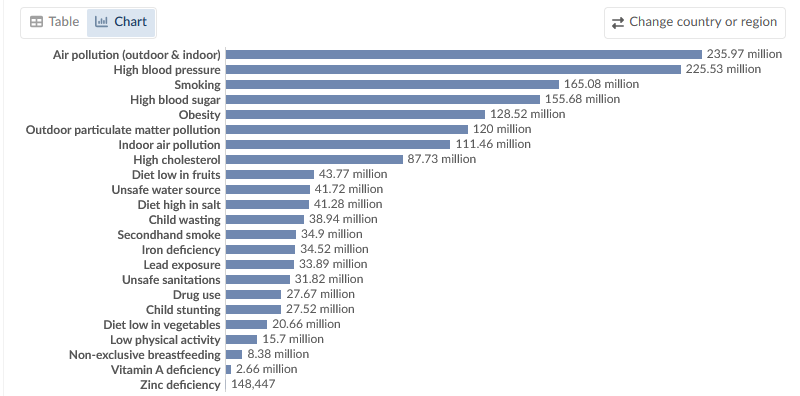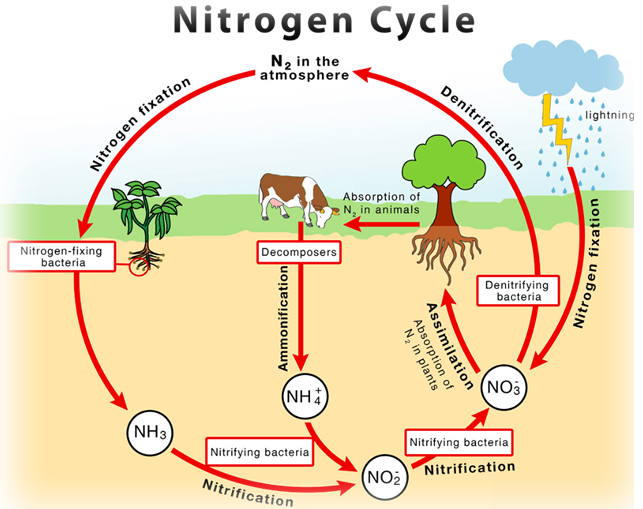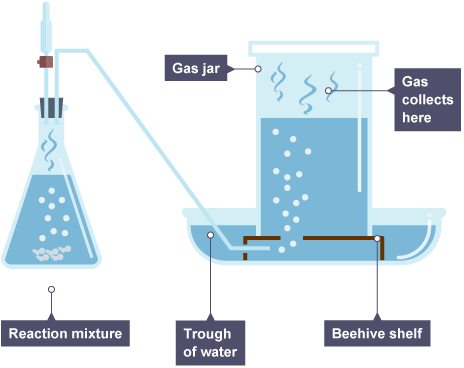Unit 9 - Every breath you take
Content
Scheme of work
Chemistry Unit 5.1 Simple Displacement reactions
In this lesson you will carry out micro-scale displacement reactions to build a reactivity series for common metals. You will record observations and write three versions of each equation: full (molecular), total ionic, and net ionic. You will also identify spectator ions — ions that appear unchanged on both sides of the equation.
Micro investigation: metal vs metal-ion
Spotting-plate matrix
- Solutions (2–5 drops each): CuSO4, NiSO4, Pb(NO3)2, FeSO4 (fresh), ZnSO4, MgSO4.
- Solids: Mg ribbon, Zn strip, Fe nail, Pb foil, Ni foil, Cu foil. Lightly abrade before use.
- Populate a 6×6 grid (rows = solids, columns = solutions). Observe for colour change, metal plating, precipitate formation.
From full → total ionic → net ionic
- Step 1: Write and balance the full equation (use correct product ions and counter-ions).
- Step 2: Split strong aqueous electrolytes into ions; keep solids, liquids, gases intact.
- Step 3: Cancel spectator ions (identical species on both sides) to get the net ionic equation.
- Check atoms and charge are balanced.
Worked examples from today’s grid
Zn(s) + CuSO4(aq) → ZnSO4(aq) + Cu(s)
- Total ionic: Zn(s) + Cu2+(aq) + SO42−(aq) → Zn2+(aq) + SO42−(aq) + Cu(s)
- Net ionic: Zn(s) + Cu2+(aq) → Zn2+(aq) + Cu(s) (spectator: SO42−)
Ni(s) + Pb(NO3)2(aq) → Ni(NO3)2(aq) + Pb(s)
- Total ionic: Ni(s) + Pb2+(aq) + 2NO3−(aq) → Ni2+(aq) + 2NO3−(aq) + Pb(s)
- Net ionic: Ni(s) + Pb2+(aq) → Ni2+(aq) + Pb(s) (spectator: NO3−)
Pb(s) + CuSO4(aq) → PbSO4(s) + Cu(s)
- Here SO42− is not a spectator — it forms a precipitate (PbSO4).
- Net ionic (already “net” as written): Pb(s) + Cu2+(aq) + SO42−(aq) → PbSO4(s) + Cu(s)
If no change is observed (e.g., Cu(s) in ZnSO4), record “no reaction”.
Summary
- Displacement occurs when a more reactive metal forms ions and forces a less reactive metal to deposit.
- Spectator ions appear unchanged on both sides and cancel in the net ionic equation.
- Ions cease to be spectators if they form a precipitate, gas, or weak electrolyte.
Check your understanding
- Write full, total ionic, and net ionic equations for Fe(s) in CuSO4(aq). Identify spectators.
- Why is NO3− a spectator in Ni(s) + Pb(NO3)2, but SO42− is not a spectator in Pb(s) + CuSO4?
- State one observation that indicates a displacement has occurred.
Chemistry 5.2 - The reactions of metals with water and acids
Both water and acids contain free hydrogen ions (or solvated hydrogen ions, H+(aq)), the only difference is the concentration. In neutral water the concentration of hydrogen ions = 1 x 10-7 mol dm-3, hence the pH is 7.
Today you’ll connect the reactivity series to reactions with water and dilute acids, then place hydrogen in the series. You’ll write full, total ionic, and net ionic equations for acid–metal reactions and identify spectator ions.
Quick revision demos (teacher-led, small-scale)
Cold water: Ca reacts; Mg slowly; Zn/Fe negligible at room temperature.
Ca(s) + 2H2O(l) → Ca(OH)2(s) + H2(g)
The reaction of calcium with water
Dilute HCl with Mg and Zn release H2 readily; Fe slower; Cu/Ag no reaction.
Zn(s) + 2HCl(aq) → ZnCl2(aq) + H2(g)
The reaction of zinc with hydrochloric acid
The chloride ions do not change from start to finish - they are spectator ions.
Equations with spectators
Acid–metal examples
Mg(s) + 2HCl(aq) → MgCl2(aq) + H2(g)
- Total ionic: Mg(s) + 2H+(aq) + 2Cl−(aq) → Mg2+(aq) + 2Cl−(aq) + H2(g)
- Net ionic: Mg(s) + 2H+(aq) → Mg2+(aq) + H2(g) (spectator: Cl−)
Fe(s) + 2HCl(aq) → FeCl2(aq) + H2(g)
- Net ionic: Fe(s) + 2H+(aq) → Fe2+(aq) + H2(g)
Ca(s) + 2H2O(l) → Ca(OH)2(aq) + H2(g)
Water is both reactant and source of H+ - there are no spectator ions here.
Where does hydrogen belong?
- Metals that displace H2 from dilute acids are **above** hydrogen in the series (easier oxidation).
- Those that do not (e.g., Cu, Ag) are **below** hydrogen (less reactive).
- Highly reactive alkali metals (Na, K) are far above hydrogen but are not handled in class; use curated videos instead.
Summary
- Acid–metal reactions illustrate electron transfer: metal → metal ion; 2H+ → H2.
- Counter-ions like Cl−, NO3−, SO42− are often spectators unless a precipitate forms.
- Position hydrogen in the reactivity series using acid tests as evidence.
Check your understanding
- Write full, total ionic, and net ionic equations for Zn(s) + 2HCl(aq). Identify the spectator ion.
- Predict and justify whether Cu(s) reacts with dilute HCl. Give a net ionic equation or state “no reaction”.
- Explain why SO42− can be a spectator in Zn(s) + CuSO4, but not in Pb(s) + CuSO4.
5.3 Corrosion: Why Metals Fail (Rust, Galvanic Pairs, and Protection)
Corrosion quietly destroys structures and costs huge amounts of money each year.
Starter: why do structures fail?
- Watch a short video about a historical bridge failure; discuss how tiny defects + corrosion can lead to catastrophic failure.
- Brainstorm: where do you see corrosion in daily life? (bikes, boats, cars, outdoor fixtures)
What is corrosion?
Corrosion could be described as wearing down by chemical action, if you like chemical erosion. The waves break down the rocks on the shore by mechanical erosion, but a process that wears something down by chemical attack and reaction is corrosion.
- Corrosion is an electrochemical process: the metal is oxidised (loses electrons), often by dissolved oxygen in water.
- On iron in aerated water: anode and cathode spots form on the same surface or between dissimilar metals.
Rust chemistry (neutral/alkaline, aerated water)
- Anode (iron dissolves): Fe(s) → Fe2+(aq) + 2e−
- Cathode (oxygen reduced): O2(aq) + 2H2O(l) + 4e− → 4OH−(aq)
- Combine: 2Fe(s) + O2(aq) + 2H2O(l) → 2Fe2+(aq) + 4OH−(aq)
- Follow-up: Fe2+ + 2OH− → Fe(OH)2(s) → further oxidation/dehydration → hydrated iron(III) oxides (rust) Fe2O3·xH2O
- Spectators: Na+, Cl− often do not appear in the net equation, but Cl− speeds pitting by disrupting protective films.
Micro-investigation: the “rust race”
Set up and compare protection/acceleration methods
- Label wells on a spotting plate (or small test tubes): tap water; salt water; boiled water with an oil layer; nail wrapped to **zinc** (galvanic protection); nail wrapped to **copper** (galvanic acceleration); nail painted or lightly oiled.
- Use clean iron nails; just cover with solution; observe over the lesson and next lesson.
- Record evidence: colour of solution, bubbles, rust location (near which contact?), mass/appearance changes.
Quantitative investigation: planning and measuring corrosion rate
Investigation - The rate of corrosion in iron
Reasearch Question: “How does X affect the rate of corrosion of iron?”
Choose ONE independent variable.
Method must include apparatus used with size. Controlled variables must be measured using suitable instruments.
Explain how sufficient data is to be obtained.
Galvanic pairs: dissimilar metals in contact
- More reactive metal (from your series) becomes the **anode** and corrodes faster; the less reactive becomes the **cathode** and is protected.
- Example, iron in contact with zinc in salt water:
Equations with spectators and net ionic forms
- Anode (sacrificial): Zn(s) → Zn2+(aq) + 2e−
- Cathode (on iron surface): O2 + 2H2O + 4e− → 4OH−
- Net corrosion protection: zinc provides electrons, so Fe stays as Fe(s). Nitrate/sulfate/chloride ions are spectators in the electron-balance sense.
- Opposite case (iron touching copper): Fe becomes the anode and corrodes faster while Cu is protected.
How we slow corrosion
- Barrier methods: paint, oil/grease, plastic coatings keep out oxygen and water.
- Sacrificial anodes: attach zinc/magnesium blocks to protect iron/steel (boats, pipelines).
- Galvanising: zinc-coated steel protects even if scratched (zinc sacrifices itself).
- Stainless steel: chromium forms a thin, self-healing oxide (passivation).
Summary
- Corrosion is an electrochemical process: oxidation at an anode spot, reduction (often O2) at a cathode spot.
- Dissimilar metals create tiny galvanic cells that can accelerate corrosion of the more reactive metal.
- Protection strategies include barrier coatings, sacrificial anodes, galvanising, and using passivating alloys.
Check your understanding
- Explain, with half-equations, why an iron nail wrapped with copper corrodes faster in salt water.
- Why does zinc protect iron when they are in contact? Include the anode and cathode half-equations.
- Which method combats corrosion by removing the electrolyte: paint, sacrificial anode, or stainless steel? Justify.
5.4 - Building a Simple Voltaic Cell
Voltaic or Galvanic cells are constructed to generate an electrical potential from chemical energy. The chemical energy is converted into electrical energy that can be made to drive a current around an electrical circuit.
The difference in reactivity results in the chemical potential energy. This causes electrons to attempt to move from one substance to another (a redox reaction). The electrons are able to flow around the external circuit making a flow of electrical charge. This is known as an electrical current.
Actual and conventional current
Curiously the direction of current flow is different in physics and chemistry. In chemistry the focus is on the actual negative charge that is flowing. This moves around the external circuit from negative to positive.
In this lesson you will assemble a zinc–copper galvanic cell and explain how it works using full, total ionic, and net ionic equations. You will identify the anode and cathode, show the direction of electron and ion flow, and connect the observed voltage to the reactivity series you built in Chem5.1–5.2.
Electrochemical cell construction
Circuit convention: Zn|Zn2+ ∥ Cu2+|Cu
Oxidation reaction || Reduction reaction
Investigation - Cell construction and measurement of cell potential
- Electrodes: zinc strip and copper strip (clean with emery paper).
- Solutions: 0.5 M ZnSO4 and 0.5 M CuSO4 in separate beakers.
- Salt bridge: filter paper strip soaked in 1.0 M KNO3 (or agar gel bridge). Potassium and nitrate ions flow in salt bridge to balance charge as current flows.
- Leads and multimeter. Optional small load: LED with a series resistor (≥220 Ω) or a low-current buzzer.
Procedure
- Place Zn in ZnSO4 and Cu in CuSO4. Connect with the salt bridge. Wire Zn to the multimeter COM (black) and Cu to VΩmA (red).
- Record open-circuit voltage (expect around 1.0–1.1 V if concentrations are similar).
- Briefly connect the LED + resistor; observe dim light and note any voltage drop (internal resistance).
Explaining the chemistry
- Anode (oxidation): zinc loses electrons. Cathode (reduction): copper(II) gains electrons.
- Electrons flow through the wire from Zn (anode) → Cu (cathode). Cations in the salt bridge move toward the cathode; anions toward the anode, to keep solutions electrically neutral.
Equations (full → total ionic → net ionic)
Full (molecular): Zn(s) + CuSO4(aq) → ZnSO4(aq) + Cu(s)
- Total ionic: Zn(s) + Cu2+(aq) + SO42−(aq) → Zn2+(aq) + SO42−(aq) + Cu(s)
- Net ionic: Zn(s) → Zn2+(aq) + 2e− (anode) and Cu2+(aq) + 2e− → Cu(s) (cathode)
- Overall net ionic (adding half-equations): Zn(s) + Cu2+(aq) → Zn2+(aq) + Cu(s)
- Spectators: SO42− (and NO3− from the salt bridge) appear unchanged on both sides.
Cell notation: Zn(s) | Zn2+(aq) ∥ Cu2+(aq) | Cu(s)
Left is the anode (oxidation), right is the cathode (reduction).
Link to your reactivity series
- Zinc was more reactive than copper in displacement tests, so zinc becomes the anode (it is more easily oxidised).
- The measured cell voltage is consistent with this ordering; swapping the metals reverses the sign and the cell will not run spontaneously in that direction.
Summary
- A galvanic cell converts chemical energy to electrical energy by coupling oxidation at the anode to reduction at the cathode.
- Full, total ionic, and net ionic equations clarify which species change and which are spectators.
- The salt bridge completes the circuit by allowing ions to move; nitrate or sulfate ions usually act as spectators.
Check your understanding
- Identify the anode and cathode in Zn|Zn2+ ∥ Cu2+|Cu, and state the direction of electron flow in the external circuit.
- Write the full, total ionic, and net ionic equations for the overall cell reaction. Which ions are spectators?
- Predict what happens to the voltage if the CuSO4 solution is diluted while ZnSO4 stays the same. Explain qualitatively.


